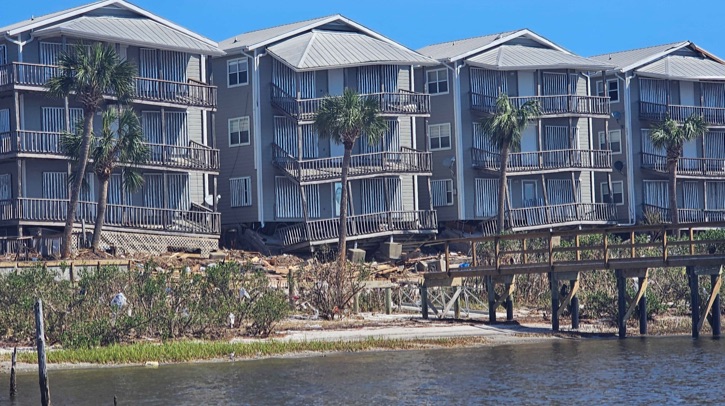A joint team from the Nearshore Extreme Events Reconnaissance (NEER) Association and the Geotechnical Extreme Events Reconnaissance (GEER) Association, including researchers from the Woods Hole Oceanographic Institution (WHOI), were mobilized to investigate the real-time impacts of storm surges and waves from Hurricanes Helene and Milton. Support for this work was provided by The National Science Foundation (NSF).
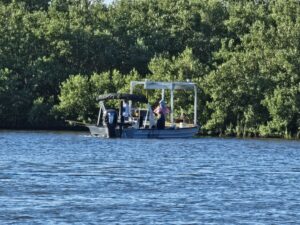
Data collection
Before, during and after the storms, the team collected measurements and observations of surge, waves and sediment erosion and deposition, as well as debris transportation and accumulation in the nearshore and coastal environments from central to northern sections of the west coast of Florida, with focus areas in Cedar Key and Horseshoe Beach.
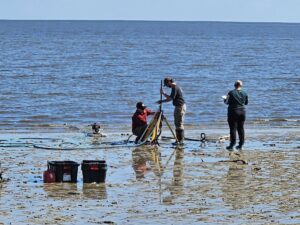
The findings are expected to improve understanding, prediction and mitigation of inundation and erosion during severe tropical storm events due to storm surge and wave action. These events are unique in that pre- and during-storm data was collected during a category 4 wind event with a 4m storm surge. Data will be shared through NSF’s Natural Hazard Engineering Research Infrastructure (NHERI) and with local communities and parties of interest to increase awareness and understanding of risk assessments.
Dr Britt Raubenheimer, senior scientist in applied ocean physics and engineering at WHOI, is the NEER founder and director and has been remotely supporting the team, composed of natural hazards researchers and practitioners from the coastal and geotechnical engineering communities.
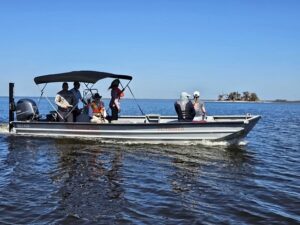
Applied findings
The Big Bend coast of Florida was recently affected by a series of tropical storm events, including Hurricane Idalia (Cat. 3; Sept 2023), Hurricane Debbie (Cat. 1; July 2024), Hurricane Helene (Cat 4; Sept 2024) and Hurricane Milton (Cat. 3, Oct 2024). Hurricane Helene stood out for its rapid intensification just prior to landfall, limited warning and preparation time for residents, as well as the storm’s inland reach and impact.
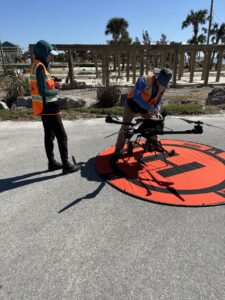
The NEER team collected detailed data quantifying storm surge and wave heights throughout Hurricane Helene’s approach and landfall, as well as detailed topographic and aerial imagery data of the areas of Cedar Key, Suwannee, Shired Island and Horseshoe Beach in Florida on the day before and soon after landfall. Data was also collected throughout Hurricane Milton and was unique for its diversity of methods, detail and comprehensiveness in providing insight into the impacts of tropical cyclones on coastal communities. The data included measurements spanning natural mangrove, dune and tidal flat systems, as well as rubble mound and seawall features, and will help researchers and coastal managers understand the benefits, drawbacks and unintended consequences of ‘green’ and ‘gray’ coastal protection methods. Preliminary comparisons of observations during Hurricane Idalia and Helene suggest that impacts to infrastructure and natural systems from large storms are greater than would be expected from the impacts of smaller events.
Hurricane Helene is the first storm during which oceanographic and meteorological data was collected simultaneously at the shoreline, enabling direct evaluation of water versus wind impacts. The results will also contribute to improved risk assessments and impact predictions of tropical cyclones for coastal communities. For example, several destructive barrier island breaches occurred during Hurricane Milton, and continued data collection will help to understand the causes of these breaches. This data will be used by scientists and communities to better understand and improve predictions of hurricane impacts.
In related news, NSF NCAR recently ran simulations on the Cheyenne supercomputer at the NCAR-Wyoming Supercomputing Center to tease out the influence of Kelvin waves – the large-scale atmospheric waves that can extend more than 1,000 miles in the atmosphere and shape global weather patterns – and anticipate clusters of hurricanes days to weeks in advance. Click here to read the full story.


